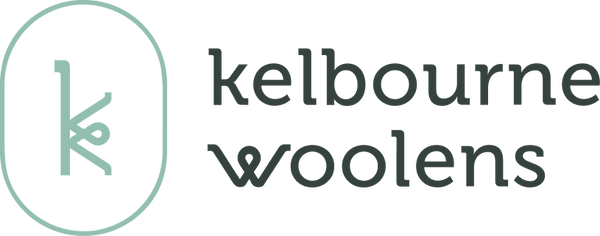



If you have taken a class with me or Courtney, or met us at an event and asked “how did you two get started with Kelbourne?” inevitably, you will hear about our backgrounds in weaving. Despite longing for a BFA or MFA, when looking into college and then grad school, I went with an ever-so-slightly more practical route and obtained B.S. and M.S. degrees in Textiles that focused heavily on weave structure and production.
Since Kelbourne was founded right in the middle of my masters work, I never had the opportunity to pursue weaving as the focus of my career. After moving into a home with room for a dedicated studio 2 years ago, I finally had the space to set up my floor loom (and the freedom to weave something not related to my grad work), and was delighted – and a bit overwhelmed – at the possibility.
A large focus of my graduate work was on designing patterns for the jacquard loom and coming up with new structures on the 24 harness compu-dobby. Both required heavy sampling and development (think swatching over…and over…and over).
When returning to weaving for fun, I looked to one of my favorite structures, Overshot, to create this scarf. Overshot is deceptively simple, and the end result is quite beautiful. The structure looks incredibly complicated, but the effort is in the threading. Unlike a straight draw, where the ends of a warp are threaded 1-2-3-4, etc, an overshot threading is unique to the pattern and directly related to the treadling of the warp ends. The large blocks of color created by floats of the patterning weft are stabilized by a tabby weft, a much thinner warp end that is woven in a plain weave after every patterning weft pick. To throw in a knitting analogy, while applied differently, the tabby weft can be thought of similarly as tacking long floats in colorwork.
We featured this scarf in an ad in a recent issue of Handwoven in an effort to show off The Fibre Co. Meadow and The Fibre Co. Lace as excellent weaving yarns. After receiving requests to make the pattern available, I was finally thoroughly convinced to do so by a lovely woman, Elinor, who lives in the same area of New York state where I went to undergrad.
NEIGE SCARF:
STRUCTURE:
“Fish in the Pond” Overshot from The Shuttle-Craft Book of American Hand-Weaving by Mary Meigs Atwater, as published in A Weaver’s Book of 8-Shaft Patterns edited by Carol Strickler.
EQUIPMENT:
• 8-shaft loom, at least 24” weaving width
• 12 dent reed
• 2 shuttles
YARNS:
WARP: The Fibre Co. Meadow (40% merino wool, 25% baby llama, 20% silk, 15% linen; 545 yds/100 gm skein): queen anne’s lace, 2 skeins.
PATTERNING WEFT: The Fibre Co. Lace (65% baby alpaca, 15% silk, 10% camel, 10% cashmere; 656 yds/100 gram skein): grey pearl, 1 skein.
TABBY WEFT: Jaggerspun Zephyr (50% merino wool, 50% silk; 1120yds/100 gm skein): vanilla, 1 skein.
WARP LENGTH:
214 warp ends, 3 yds long. (allows for 6” take-up, 28” loom waste, 10” swatching/sampling).
SETTS:
WARP: 18 epi (1 – 2 / dent in a 12-dent reed)
WEFT: 18 ppi patterning, 18 ppi tabby
DIMENSIONS:
WIDTH IN REED: 11.66”
AFTER FINISHING: 10.625” width, 64.25” length, not including fringe.
For the weave draft and weaving instructions, download the free .PDF here.
(NOTE: There was a slight error in the threading. The initial “1-2” sequence should only be worked 3 times, not 4. The PDF has been updated as of 2.1.16)
Additionally, you are new(er) to weaving and are looking to expand your knowledge of overshot, I cannot recommend the following books enough:
• A Weaver’s Book of 8-Shaft Patterns, edited by Carol Strickler
• Weaving Designs by Bertha Gray Hayes: Miniature Overshot Patterns, by Norma Smayda , Gretchen White, Jody Brown, & Katharine Schelleng
– KGO





